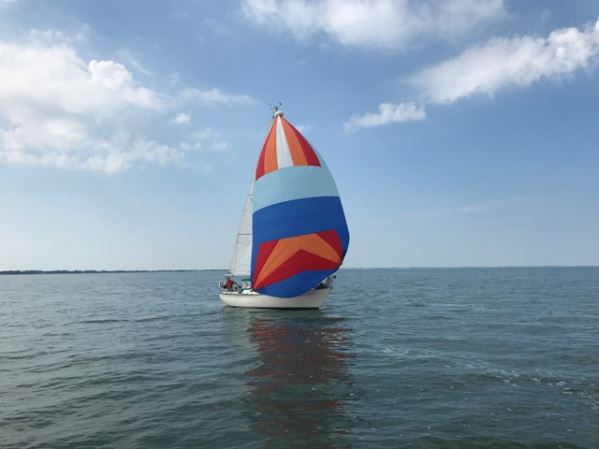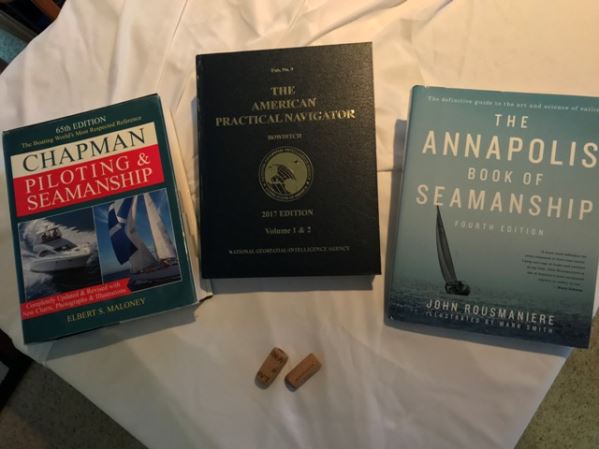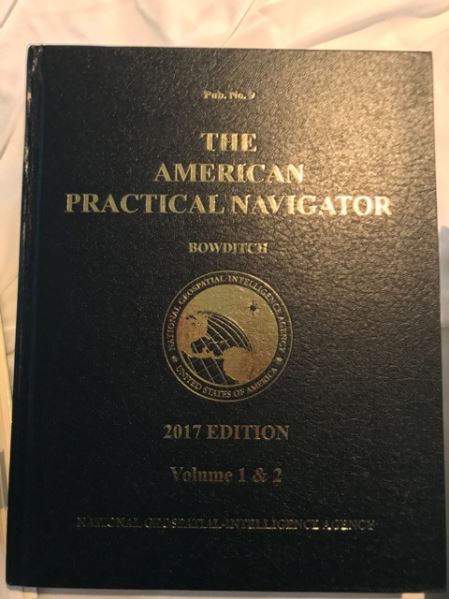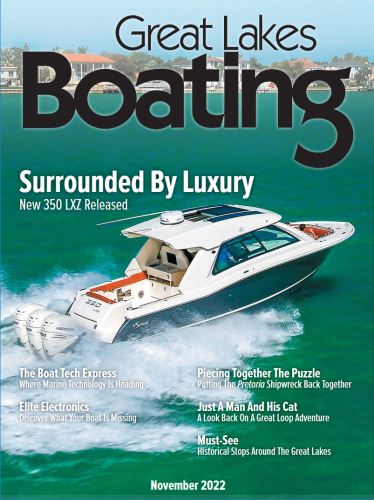 Every once in a while I take some time to browse through my bookshelves to see what I can find. Always, there are the standard fare of books related to sailing, navigation, repairs, etc. that we all accumulate over the years. Some of my favorites, of course, are The American Practical Navigator, or “Bowditch” as it is often called generically. The latest iteration of this fantastic book is the 2017 edition. First published in 1802 by Nathanial Bowditch as “Being an Epitome of Navigation,” it is both a phenomenal resource and a fun book to just look through on occasion. Another favorite is Elbert Maloney’s Chapman Piloting And Seamanship, which is, I believe, the 69th edition and a resource every sailor should have nearby. One more of my favorites would be The Annapolis Book Of Seamanship by John Rousmaniere. This is a book that lays out in very understandable terms information useful to all of us.
Every once in a while I take some time to browse through my bookshelves to see what I can find. Always, there are the standard fare of books related to sailing, navigation, repairs, etc. that we all accumulate over the years. Some of my favorites, of course, are The American Practical Navigator, or “Bowditch” as it is often called generically. The latest iteration of this fantastic book is the 2017 edition. First published in 1802 by Nathanial Bowditch as “Being an Epitome of Navigation,” it is both a phenomenal resource and a fun book to just look through on occasion. Another favorite is Elbert Maloney’s Chapman Piloting And Seamanship, which is, I believe, the 69th edition and a resource every sailor should have nearby. One more of my favorites would be The Annapolis Book Of Seamanship by John Rousmaniere. This is a book that lays out in very understandable terms information useful to all of us.
But how about some of the fun books that I found on the shelves which might make for some nice early spring reading? Everyone has their favorites, so if I’ve missed one of yours just let us know about it and we can pass it on. In no particular order, here are some of the books I found on the shelves and can recommend.
Sailing Alone Around The World by Joshua Slocum. This is his account of the single-handed voyage of nearly 46,000 miles around the world on his sloop Spray that began April 24, 1895, in Boston, Mass., and finished June 27, 1898, in Newport, Rhode Island. This is an incredible first-hand account written in Slocum’s down-to-earth and entertaining style. Longitude, the true story of a lone genius who solved the greatest scientific problem of his time, by Dava Sobel. This is a fun read about the quest to build the perfect chronometer and thus be able to determine longitude with precision. It is a tale full of heroism, brilliance and the absurd as well as a brief history of clock making, navigation and astronomy. Fastnet, Force 10 by John Rousmaniere. This is an excellent account of the 1979 Fastnet Race which covers 600 miles from Cowes on the Ilse of Wight to Fastnet Rock off the Irish coast and back. This is a story of 303 yachts getting slammed by a Force 10 storm which swept off the Atlantic. When all was said and done, only 85 yachts finished the race; 5 had sunk, 136 people were rescued and 15 had died. The aftermath of this race led to the development of better safety gear, which we take for granted. This is certainly a sailing classic and should be forever.
finished the race; 5 had sunk, 136 people were rescued and 15 had died. The aftermath of this race led to the development of better safety gear, which we take for granted. This is certainly a sailing classic and should be forever.
There are two excellent accounts of the 1998 Sydney-Hobart Race, a 630-mile run from Sydney, Australia, to Hobart, on the east coast of Tasmania. The race started the day after Christmas with a perfect day and crowds of spectators on shore and in boats around the starting line. Less than a day later the fleet was hit with hurricane force winds and 80-foot seas. Seven boats were abandoned, five sank, 57 sailors were rescued and six died. The Proving Ground by G. Bruce Knight is an account of the race that focuses on three yachts and their crew. This is a well-written adventure story that covers all aspects of offshore racing as well as a look at what it is that draws us to the sea and all she has to offer, both glorious and dangerous. Fatal Storm, the inside story of the tragic Sydney-Hobart Race by Rob Mundle, is the other one. Rob is an experienced journalist who has covered the Sydney-Hobart Race more than 30 times and sailed in it more than four times. He also knew many of the participants in the 1998 race. This is a haunting tale of the sailors, the audience and the sea around us.
Little Blue Book Of Sailing Secrets by Peter Isler. This is a great “little” book by someone who needs no introduction. A book written for sailors and non-sailors alike from a master sailor who shares his sea stories, sailing tips and techniques and a bit of wisdom. Cruising Under Sail by Eric Hiscock. The third edition of this classic combines with its companion book, Voyaging Under Sail, and while written many years ago it is an excellent compendium for the beginner and experienced sailors of all aspects of cruising. I can recommend any book by this author.
 The Capable Cruiser by Lin and Larry Pardey. This is another “how to” book from the Pardeys. As with their other books such as The Self Sufficient Sailor, this one is certainly worth reading. Even though written in the mid-1990s, this book offers sound advice on cruising…wherever you choose to go and whatever type of boat you choose.
The Capable Cruiser by Lin and Larry Pardey. This is another “how to” book from the Pardeys. As with their other books such as The Self Sufficient Sailor, this one is certainly worth reading. Even though written in the mid-1990s, this book offers sound advice on cruising…wherever you choose to go and whatever type of boat you choose.
The Last Navigator by Steve Thomas. This is a wonderful account of Thomas traveling to Micronesia to learn the (nearly) lost art of the ancient “star path navigation” under the tutelage of master navigator Mau Piailug. While I fear the loss of using paper charts in navigation due to all the electronics at our fingertips, it is sad to consider what the loss of this art really means.
It appears this is more than the ten books I promised and there are more on the shelf. Before I end this missive, I should mention that there is an entire chapter in Herman Melville’s Moby Dick devoted to one of the best seamen on the ship, who happens to be from the great inland seas of Erie, Huron, Michigan, Ontario and Superior. He sailed out of Buffalo. Enjoy your spring reading, the boat shows and planning for an early launch.

